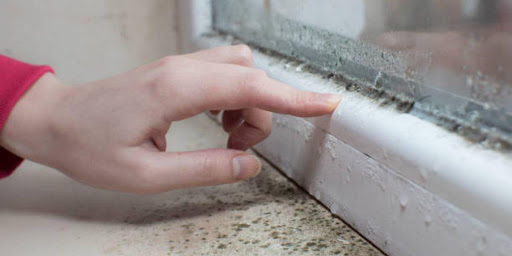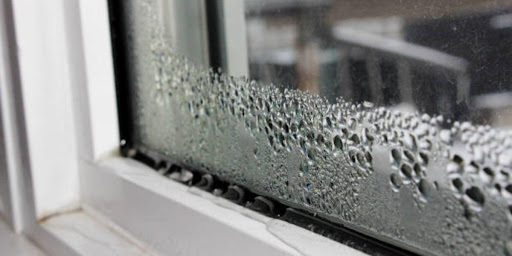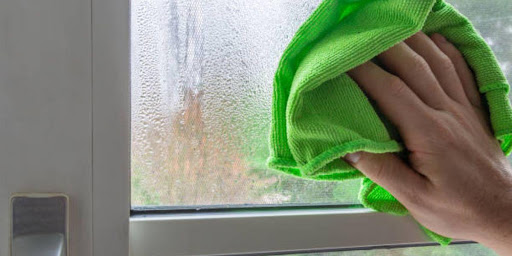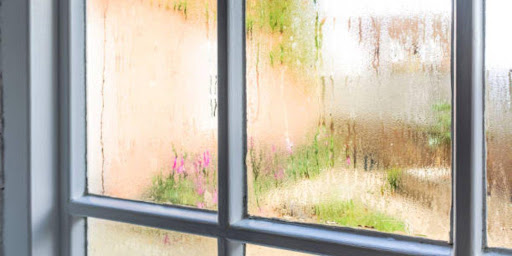Power Articles
Industry Elevating Content
Easy Fixes for Window Condensation

PowerArticles
Nov. 6, 2023
In the world of window and door installations, combating window condensation is a common challenge, but fear not, for there are straightforward solutions at your disposal. Condensation occurs when warm indoor air meets cold window surfaces, creating moisture that can lead to unsightly water droplets and potential damage. This article aims to provide practical insights for home improvement companies in the business of installing windows and doors. By the time you’ve finished reading, you’ll be armed with easy fixes to keep condensation at bay, ensuring satisfied customers and a job well done.
Understanding Window Condensation
Window condensation is a common issue that many homeowners face. It occurs when moisture accumulates on the inside or outside of your windows, leading to various problems. To address this concern, it’s crucial to first understand the causes and types of window condensation.
Causes of Window Condensation
- Indoor Humidity: Excessive indoor humidity is a primary culprit for window condensation. When warm, moist air comes into contact with cooler window surfaces, it cools down, causing water droplets to form. This often happens in areas with poor ventilation.
- Temperature Differentials: Temperature differentials between the inside and outside of your home can contribute to window condensation. When the outside is cold and the inside is warm, moisture in the air condenses on your windows.
- Inadequate Ventilation: Inadequate ventilation traps moisture indoors, preventing it from escaping. This trapped moisture can lead to condensation problems on your windows.
Types of Window Condensation
- Exterior Condensation: Exterior condensation occurs when moisture accumulates on the outside of your windows. It typically happens during cold weather when the window surface is cooler than the dew point of the outdoor air.
- Interior Condensation: Interior condensation, on the other hand, forms on the inside of your windows. It is a result of high indoor humidity, temperature differences, or inadequate ventilation. Interior condensation can lead to a variety of issues if left unaddressed.

The Impact of Window Condensation
Window condensation may seem like a minor inconvenience, but it can have significant consequences for your home and its occupants. Understanding its impact is essential.
A. Health Concerns:
Excessive indoor condensation can lead to mold and mildew growth, which can trigger allergies and respiratory problems. It also provides a breeding ground for dust mites, further aggravating health issues.
B. Aesthetic Issues:
Condensation can obscure the view through your windows, making your home feel less inviting. Streaks and water damage on window sills can also negatively affect the appearance of your home.
C. Potential Damage to Windows and Surrounding Structures:
If condensation is left unaddressed, it can lead to rotting of wooden window frames and sills. Over time, this can compromise the structural integrity of your windows and even damage the surrounding walls.
Easy Fixes for Window Condensation
Home improvement companies that install windows and doors can take several measures to help homeowners combat window condensation and maintain comfortable, problem-free living spaces.
Proper Window Selection and Installation
- High-Quality, Energy-Efficient Windows: Choosing high-quality, energy-efficient windows with advanced glazing can minimize temperature differentials and reduce condensation. These windows provide better insulation and thermal performance.
- Proper Sealing During Installation: Ensuring a tight, well-sealed installation of windows can prevent air leaks, which contribute to condensation. Proper sealing is vital to maintaining a comfortable indoor environment.
Humidity Control
- Use of Dehumidifiers: Installing dehumidifiers in areas with high humidity levels can help maintain an optimal indoor humidity level, reducing the likelihood of condensation.
- Regular Ventilation: Promoting proper ventilation by using exhaust fans, opening windows periodically, and utilizing air exchange systems can help reduce moisture buildup inside the home.
Insulation and Weatherization
- Ensuring Adequate Insulation: Proper insulation in walls and around windows can reduce temperature differentials, preventing condensation. Properly insulated homes are more energy-efficient and comfortable.
- Eliminating Drafts: Sealing any gaps or drafts around windows and doors can prevent cold air from infiltrating, reducing the potential for condensation on interior surfaces.
Window Treatments
- Use of Insulated Curtains or Blinds: Adding insulated curtains or blinds can help maintain a stable indoor temperature, minimizing condensation on the interior of windows.
- Window Film for Added Insulation: Applying window film can enhance insulation properties, reducing temperature differentials and the likelihood of condensation.

Tools and Equipment for Easy Fixes
List of Necessary Tools
For home improvement companies looking to tackle window condensation, having the right tools is crucial. Here’s a list of essential equipment you’ll need:
- Safety Gear: Before you begin, ensure your workers have safety gear, including gloves, eye protection, and respirators if needed.
- Measuring Tools: Accurate measurements are key. Invest in a tape measure, a level, and a square to ensure precision.
- Sealant and Caulk: High-quality silicone or polyurethane sealant will be your best friend for sealing gaps and cracks around windows.
- Dehumidifiers: Having portable dehumidifiers can help reduce the overall humidity in the room, minimizing condensation issues.
- Insulation Materials: Depending on the situation, you may need insulation like weatherstripping or foam board to improve the window’s insulation.
- Ventilation Fans: In some cases, installing or improving ventilation fans in bathrooms and kitchens can help reduce humidity levels.
- Window Coverings: Encourage customers to use curtains, blinds, or shades to regulate indoor temperatures and humidity.
- Cleaning Supplies: Basic cleaning tools like sponges, rags, and a glass cleaner will help maintain the windows.
Safety Precautions for Home Improvement Companies
Safety should always be a top priority for home improvement companies. Here are some crucial precautions to take:
- Training: Ensure your employees are properly trained in using the tools and equipment to avoid accidents.
- Proper Ventilation: When working with sealants and caulk, make sure the work area is well-ventilated to prevent exposure to harmful fumes.
- Use of Personal Protective Equipment (PPE): Emphasize the importance of wearing the appropriate PPE, including gloves and eye protection, to avoid accidents and chemical exposure.
- Ladder Safety: If you need to work at height, train your employees on ladder safety to prevent falls or injuries.
- Electrical Safety: When installing ventilation fans, follow electrical safety guidelines to avoid shocks or fires.

Practical Tips for Implementation
Step-by-Step Instructions for Addressing Window Condensation
- Identify the source of condensation by checking for leaks, gaps, or poor insulation.
- Seal any gaps and cracks around the window frame with silicone or polyurethane sealant.
- Improve insulation by adding weatherstripping or foam board around the window.
- Encourage customers to use exhaust fans in areas with high humidity, such as bathrooms and kitchens.
Recommended Best Practices
- Regular maintenance is key. Advise your customers to clean their windows and check for issues periodically.
- Educate homeowners on proper ventilation to reduce indoor humidity levels.
- Promote energy-efficient windows that minimize heat transfer and condensation.
Common Mistakes to Avoid
- Avoid using improper sealants or caulk; always choose the right type for the job.
- Don’t rush through the job; take your time to ensure a proper seal.
- Don’t overlook the importance of ventilation and insulation; these play a significant role in preventing condensation.
Benefits of Addressing Window Condensation
a) Enhanced Customer Satisfaction
By addressing window condensation issues effectively, home improvement companies can boost customer satisfaction. Happy customers are more likely to recommend your services to others.
b) Preventing Callbacks and Complaints
Fixing condensation problems right the first time minimizes callbacks and complaints, saving time and resources.
c) Improved Reputation for Home Improvement Companies
Consistently providing solutions for window condensation issues will enhance your reputation in the industry, leading to more business opportunities and growth.

Conclusion
In conclusion, addressing window condensation can be a straightforward process for home improvement companies specializing in window and door installations. By recommending and implementing easy fixes such as improving ventilation, sealing gaps, and ensuring proper insulation, you can help homeowners effectively combat this common issue. Not only will these solutions enhance the comfort and aesthetics of their homes, but they will also contribute to customer satisfaction and a job well done. By focusing on these simple remedies, you can ensure that your clients enjoy a drier, more comfortable living environment, and, in turn, build a reputation for excellence in your industry.
Published By
PowerArticles
Nov. 6, 2023